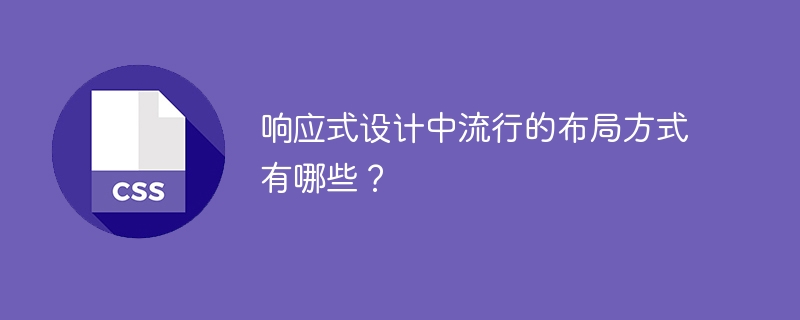
Responsive design is a design method that achieves a consistent user experience across different devices. With the popularity of mobile devices, more and more people use screens of different sizes to access web pages, so responsive design has become an important part of modern web design. In practice, designers use various layout methods to achieve responsive design. This article will introduce some popular responsive design layout methods.
- Fluid grid layout (Fluid grid layout)
Fluid grid layout is the most basic and commonly used layout method in responsive design. Web page elements use percentages instead of fixed pixels to set their width, allowing the element's size to automatically adjust to the screen size. In this way, the layout of the web page will automatically adapt when it is displayed on screens of different sizes.
- Media query layout (Media query layout)
Media query layout allows designers to apply different styles and layouts for different screen sizes. Designers can use the media query function of CSS to detect the characteristics of the screen and then apply different styles based on different characteristics. For example, designers can choose to display a different number of columns based on the width of the screen, or adjust the size and position of elements.
- Flexible grid layout (Flexible grid layout)
Flexible grid layout implements responsive layout by using the flexible box model (Flexbox). This layout dynamically adjusts the size and position of elements to accommodate different screen sizes. Designers can specify the scalability of elements so that they automatically adjust horizontally and vertically.
- Image placeholder layout (Image placeholder layout)
Image placeholder layout is a layout method that uses placeholders to replace images before loading them. When the image is loaded, the placeholder will be automatically replaced by the real image, which can avoid page jitter during image loading. This layout improves page loading speed and provides a better user experience.
- Dynamic content layout (Dynamic content layout)
Dynamic content layout is a method of adjusting the layout based on dynamic changes in content. For example, when the text content on the page becomes longer, designers can use automatic word wrapping or scroll bars to accommodate the growth of the content. This layout method can adapt to changes in dynamic content and provide better readability and user experience.
To sum up, popular layout methods in responsive design include fluid grid layout, media query layout, elastic grid layout, picture placeholder layout and dynamic content layout. Designers can choose the appropriate layout method based on specific project needs and target audience to achieve a consistent user experience across different devices.
The above is the detailed content of What are the popular layout methods in responsive design?. For more information, please follow other related articles on the PHP Chinese website!






